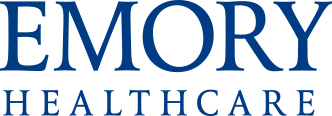How Is Glioblastoma Treated?
Nduom says it’s a difficult conversation to have with someone newly diagnosed with glioblastoma because of its difficult prognosis. His first step is to assure the patient that he is a neurosurgeon who focuses specifically on these types of tumors, and that he is part of a team who also are focused on finding better ways to treat these tumors safely. He sees his first job as getting the patient through the diagnosis period. “The good news,” he says, is that Winship has all the tools needed to provide the best surgical treatment of glioblastoma, and to determine the tumor’s level of susceptibility to radiation and chemotherapy.
After determining the tumor’s molecular characterization, the conversation shifts to prognosis and treatment. Armed with all the information gathered about the tumor, the next step is an appointment with the patient’s team, which includes neurosurgeons, to talk about recovery; neuro-oncologists, the doctors who treat brain tumors with medicine; and radiation oncologists, whose role is to focus on delivering safe and effective radiation to further control these lesions.
Nduom says that sometimes the multidisciplinary team will also include palliative care. He hastens to point out that palliative care should not be confused with hospice. Hospice is comfort care provided at the end stage of life, while palliative care is given anytime, as early as at the time of diagnosis, to help manage symptoms and side effects. “Our palliative care specialists are doctors who are just focused on making sure that the patient is as comfortable as possible and having the best quality of life while they are facing a diagnosis of cancer.” This can mean providing pain control, controlling nausea and vomiting while on chemotherapy, and keeping up the patient’s energy levels while they are doing radiation.
“The most important thing that I tell them,” says Nduom, “is there’s something we can do to help. No matter what type of tumor they’re dealing with, no matter whether they’re facing some further health challenges, there’s something we can do to make them more comfortable, there’s something we can do to slow down the lesion.”
Looking Ahead
Despite the challenges presented by glioblastoma, Nduom says, “At Winship Cancer Institute, in my own laboratory and the laboratories of several of my collaborators, we are constantly coming up with new ways to approach these lesions and treat them better.” He is aware that patients facing glioblastoma are likely to have seen bad news about patients facing an average survival time of 15 months to a year and a half. “One thing I tell them is those studies were done on other patients,” he says. “Whenever you see a median survival, that means that unfortunately about half the patients did worse than that, but half the patients did better.”
Nduom says that if he is sitting with a patient to talk about enrolling them in a clinical trial, their prognosis already positions them for a potentially better outcome. He points out that looking at advances in cancer care and reductions in the cancer death rate, particularly over the last 20 years, “there was a period just like this for many cancers that we now consider treatable, where we didn’t have really great treatments right then that we could offer patients, but we had some clinical trials that were testing promising new treatments. Some patients got enrolled in those clinical trials, and then we saw some dramatic results. And then six months later, a year later, all of a sudden there’s a brand new standard of care for how we treat these patients.”
In Nduom’s experience, he says patients with the best prospects tend to be those who know what’s going on at any given time with their neurologic status, are involved in the decision-making process, have a support network who are informed and aware of everything that’s going on, and feel like they have a strong team around them—which he notes “our multidisciplinary clinic is designed to do.”
About Winship Cancer Institute of Emory University
Winship Cancer Institute of Emory University is Georgia’s only National Cancer Institute-designated Comprehensive Cancer Center, a prestigious distinction given to the top 3% of cancer centers nationwide for conducting cancer research and providing training that is transforming cancer care, prevention, detection and survivorship. Winship discovers, develops, delivers and teaches some of the world’s most effective ways to prevent, detect, diagnose and treat each patient’s unique cancer. Cancer care at Winship includes specialists with deep expertise and experience in cancer; multidisciplinary evaluation, treatment planning and care coordination that caters to each patient’s individual needs; therapies supported by the latest advances in cancer research; and comprehensive clinical trials and support services.




